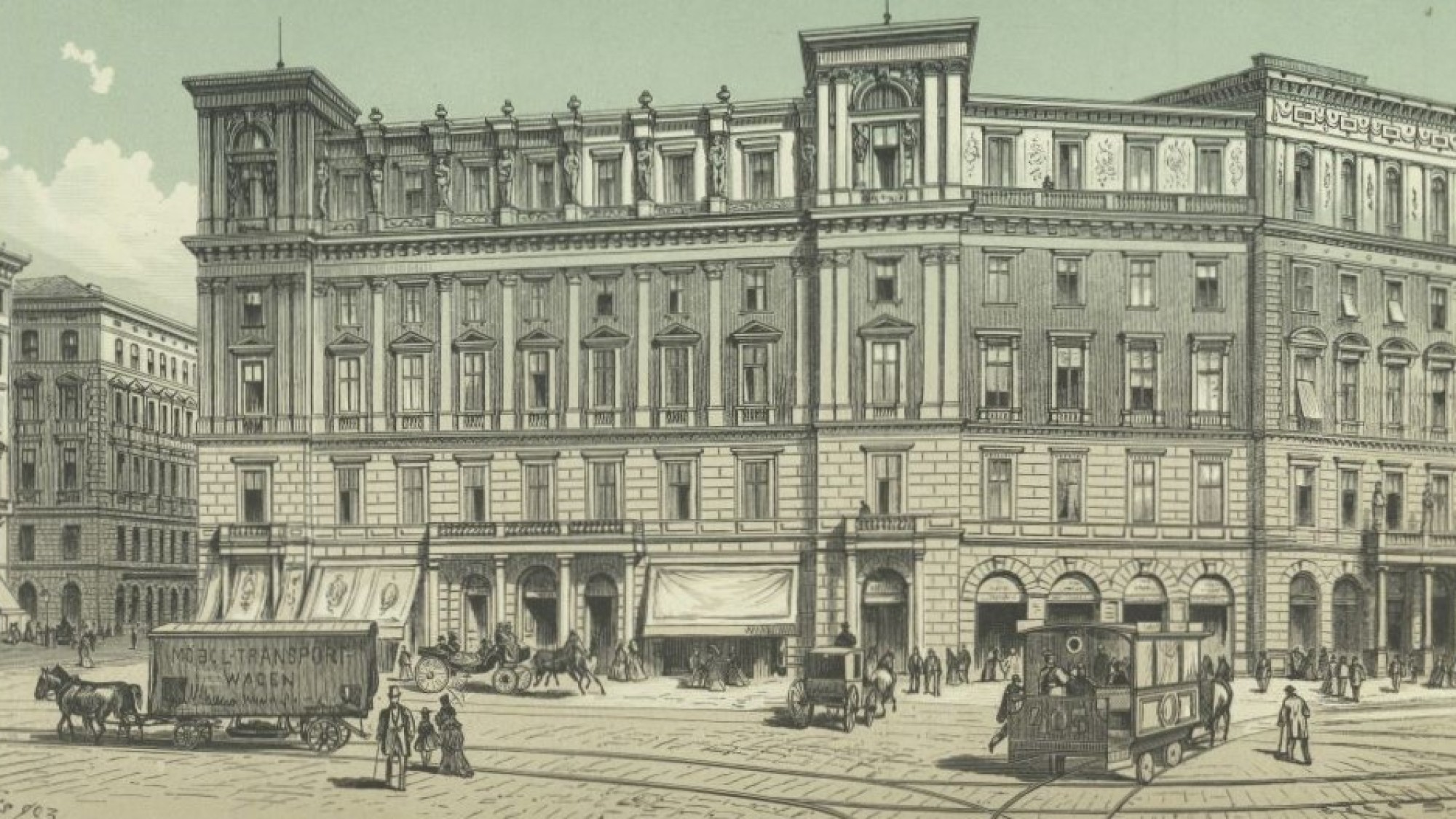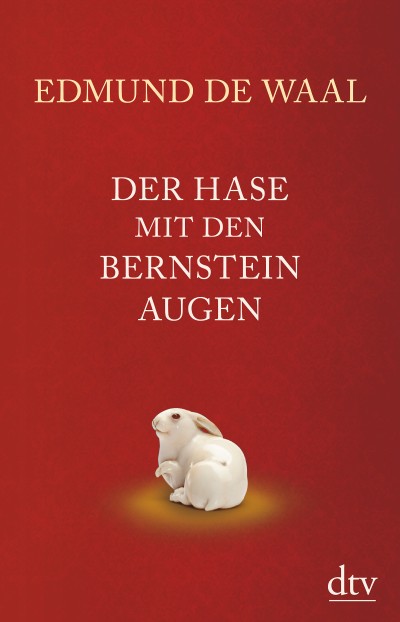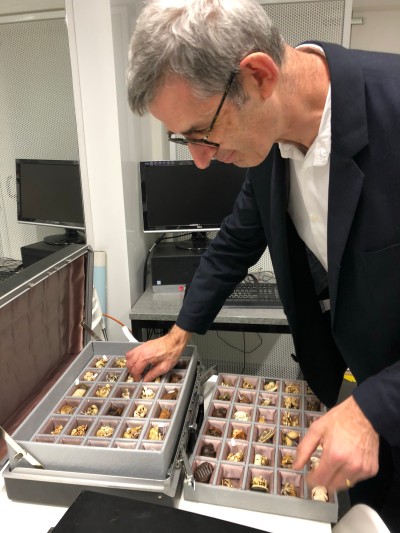Once Around the World
At the end of the 19th century, Europe was swept by a wave of enthusiasm for Japanese art. Parisian art collector Charles Ephrussi (1849-1905) also began collecting Japanese art at this time, including a considerable collection of netsuke - small, intricately carved figures from Japan. Since the 17th century, these served as a counterweight for attaching a sagemono, a hanging container, to the belt of a pocketless kimono. They were in use in this function until the 1880s, when the kimono finally fell out of fashion as an everyday garment. Netsuke are still valued today as objects of great artistic value and expressions of exceptional craftsmanship. They preferably depicted mythological figures, animals, fruits or scenes from everyday life in Japan.

© JMW
Lladislaus Eugen Petrovits: Franzensring. Vienna 1880, color printing
The banking family Ephrussi, originating from Odessa, established branches of their banking house in Paris as well as in Vienna. By marrying into Viennese society, the family expanded its social position, and by building the Palais Ephrussi on the Ringstrasse, facing the University of Vienna, they wrote themselves into the city's history. Charles Ephrussi gave the netsuke collection to his Viennese cousin Viktor (1860-1945) as a wedding present in 1899, and they were subsequently kept in a glass cabinet in the dressing room of Viktor's wife Emmy (1869-1938) in the Palais Ephrussi. After the annexation of Austria to Nazi Germany in March 1938, the Gestapo seized the collection along with the rest of the family’s assets. The Ephrussis were driven into exile: to Great Britain, the USA, and Mexico.
In his 2010 novel The Hare with Amber Eyes - A Hidden Inheritance, Edmund de Waal, Viktor Ephrussi’s great-grandson, tells how the netsuke were rescued by the family maid Anna. She hid them in defiance of the Gestapo and returned them to the family after the Nazi regime. This family story cannot be proved historically.
All trace of the netsuke was lost after the Aryanization of the family’s assets by the Nazis in 1938. They are not explicitly mentioned on the Gestapo confiscation lists. However, references to showcases with knickknacks or decorative items point to the netsuke. Did they spend the Nazi period in a depot or museum, like the family’s other art objects? Or were they actually saved from the deluge of Nazi looting?

© dtv
Cover of a german edition
It was not until 1950 that the destiny of the netsuke can be traced again: in the files of the Austrian Federal Monuments Office it is stated in an export permit to Iggie Ephrussi (1906-1994) to Tokyo: "60 pieces of netsuke, wood, 135 pieces of netsuke, ivory". Restituted to Viktor's son Iggie Ephrussi by the Republic of Austria, the netsuke thus found their way back to Japan. After his death in 1994, his great-nephew Edmund de Waal, living in London, inherited the family collection. The British ceramic artist then began to reconstruct his family history - using the netsuke collection as a starting point - and recorded it in his previously mentioned novel.

© JMW
Edmund de Waal handing over of the netsuke at the Jewish Museum Vienna, 2018.
In 2017, de Waal donated the Ephrussis family archive to the Jewish Museum Vienna. As part of the exhibition The Ephrussis. Travel in Time, the netsuke - including the famous hare with amber eyes - eventually returned to Vienna on permanent loan.
After a trip to New York, where the exhibition and the netsuke were shown at the Jewish Museum in 2021/22, the much-traveled netsuke are now back in Vienna and can be viewed in the permanent exhibition of the Jewish Museum in Dorotheergasse since April 2023.
Literature:
Gabriele Kohlbauer-Fritz/Tom Juncker (Ed.), Die Ephrussis. Eine Zeitreise / The Ephrussis. Travel in Time, Jewish Museum Vienna, 2019 (bilingual)
Edmund de Waal, The Hare with Amber Eyes: A Hidden Inheritance, Chatto & Windus, Great Britain, 2010




